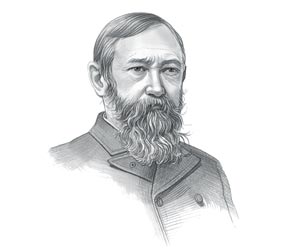|
|
|
|
|
The first movement failed, but a second movement emerged in 1888 led by Wovoka who experienced another prophetic vision during a solar eclipse. In order to realize the vision, Wovoka directed his followers to perform a traditional circle dance in a series of 5 day gatherings. The Ghost Dancers wore special symbolic clothes featuring the morning star symbol combined with the symbolic power of crow and eagle feathers.
Ghost Dance Facts for kids: What was the Ghost Dance?
Ghost Dance Purpose and Symbolism
Ghost Dance Facts for kids The first movement was initiated by Gray Hair, or Wodziwob, of the Paiute tribe. The movement began in 1870 in the Walker Lake Reservation in Nevada. Wodziwob experienced and apocalyptic vision in which a great disaster caused by fire or flood would eliminate the white man, that deceased Indians would return alive to the earth to support the tribes and the buffalo would be restored. The first Ghost Dancers performed a version of their traditional 'circle dance' with new rituals that called for the living to re-unite with the spirits of the dead and bring peace and prosperity to Native Americans Gray Hair, or Wodziwob was followed by a Shaman called Tavibo who spread the prophecy and new doctrine among other Native American tribes of the Great Plains. The first movement initiated by Wodziwob and spread by Tavibo subsided when the prophecy failed to come true. The second movement began in 1888 and was initiated by Wovoka who was Tavibo's son. Wovoka had been trained as a medicine man, or Shaman, by his father. Wovoka (1856 - 1932), also known as Jack Wilson, became highly influential amongst the tribes as a powerful Shaman who had strong magical and mystic powers. During the solar eclipse on January 1, 1889 Wovoka had a prophetic vision in which he saw the resurrection of the dead and the return of the whites from North America to their original homeland. Wovoka taught that in order to realize the vision, the Native Indians must live righteously and perform a traditional circle dance in a series of 5 day gatherings. The philosophy of the Ghost Dance and Wovoka was of peace and he asked his followers to "do no harm to anyone, do right always...do not tell lies...you must not fight". The arrival of the railroads and the policies and laws of the US Government had brought a massive influx of settlers into former Indian lands. The once numerous herds of buffalo were being wiped out as a sporting activity of white men. Tribes had been forcibly relocated to reservations, thousands of miles from their homelands. Treaties and promises had been broken. The prophecy of Wovoka quickly spread words of hope among many Native American tribes, notably the Lakota Sioux and other tribes of the Great Plains, and the number of Ghost Dancers increased in number. The Lakota Sioux leaders, Grant Short Bull and Kicking Bear, believed that although Wokova had preached against fighting that militant action would hasten the removal of the white settlers. By 1890 the U.S. authorities became fearful of the movementís rapid spread and tried to outlaw the rituals of the dancers who had started to wear specific clothing with strange, mystical symbols. The Lakota Sioux asserted that the ghost shirts were bulletproof. Memories of the 1876 Battle of Little Bighorn surfaced and the crushing defeat of the 7th Cavalry led by General George Custer at the hands of Chief Sitting Bull and his combined force of Sioux, Cheyenne & Arapaho Native American Indian tribes. In December 1890 U.S. Army officers tried to arrest Chief Sitting Bull who supported the movement and was suspected of encouraging an uprising. Lt. Henry Bullhead attempted to arrest Chief Sitting Bull, the Sioux were enraged and a gun battle began. Chief Sitting Bull was killed in the gun battle at the Standing Rock Reservation and became a symbol of Native American resistance movements The arrest of another Lakota Sioux leader, Chief Spotted Elk, aka Big Foot, was ordered. Chief Spotted Elk led his followers to the Pine Ridge Reservation hoping to find safety. On December 28, 1890 Chief Spotted Elk and his followers camped near Wounded Knee Creek and were soon surrounded on all sides by soldiers. Chief Spotted Elk had not intention of fighting. The soldiers started collecting their weapons. According to some accounts, a Shaman named Yellow Bird began to perform the Ghost Dance. A gun accidentally went off which led to the Massacre at Wounded Knee in which nearly 400 men, women and children of the Sioux nation were killed. The Massacre at Wounded Knee effectively ended the movement. Two weeks after the Wounded Knee Massacre all other Ghost Dancers surrendered to the US Army. The surrender brought an end to the Movement and the hope of the Native Indians to return to their traditional way of life. |
| US American History |
| 1881-1913: Maturation Era |
|
|
|
|
|
First Published2016-04-19 | |||
|
Updated 2018-01-01 |
Publisher
Siteseen Limited
| ||
|
|

